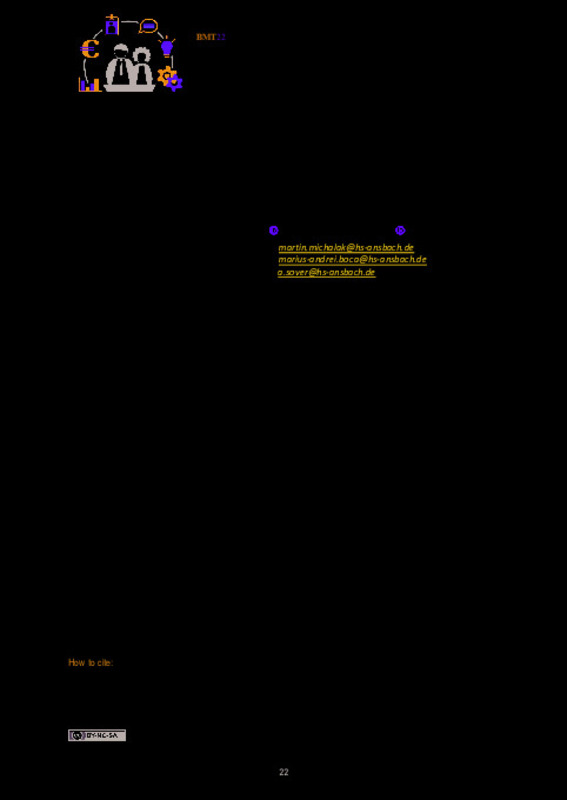JavaScript is disabled for your browser. Some features of this site may not work without it.
Buscar en RiuNet
Listar
Mi cuenta
Estadísticas
Ayuda RiuNet
Admin. UPV
Characterization of welding notch designs and the impact on mechanical properties of 3D-printed PLA parts joined by a 3D pen
Mostrar el registro sencillo del ítem
Ficheros en el ítem
| dc.contributor.author | Michalak, Martin
|
es_ES |
| dc.contributor.author | Boca, Marius-Andrei
|
es_ES |
| dc.contributor.author | Sover, Alexandru
|
es_ES |
| dc.date.accessioned | 2023-03-10T13:17:59Z | |
| dc.date.available | 2023-03-10T13:17:59Z | |
| dc.date.issued | 2023-01-10 | |
| dc.identifier.isbn | 9788413960289 | |
| dc.identifier.uri | http://hdl.handle.net/10251/192486 | |
| dc.description.abstract | [EN] 3D-printing has been established as a fast and low-cost technology to produce prototypes in small numbers. However, depending on the geometry of a part the print time still can be reduced by splitting the part in two or more smaller parts and later joining them. The reduction of the print time is caused by the possibility of printing the smaller parts with less or maybe even without any support or the use of two or more 3D printers. The joining can be done by different welding or gluing methods. For this paper 3D printed polymer parts with different welding notch designs were welded by a 3D pen and after characterized based on their mechanical properties. The notches were designed in CAD and the parts were then 3D printed. The material chosen was PLA as it is one of the most common polymer materials for FFF 3D printing. For testing and mechanical characterisation of the strength of the joined samples, four different kinds of notches were designed, manufactured and tested according to the norms for the tensile strength test and the Charpy impact test of thermoplastic polymers. The results were compared to the one of a single part printed sample. Although the mechanical properties of the welded samples were not as good as the ones of a fully printed one, the assembly even of the weakest variant, the triple notch, is still strong enough for most applications in the field of rapid prototyping. The method is easy applicable and can be fast done to ensure a good connection between 3D printed PLA parts. | es_ES |
| dc.format.extent | 9 | es_ES |
| dc.language | Inglés | es_ES |
| dc.publisher | Editorial Universitat Politècnica de València | es_ES |
| dc.relation.ispartof | 4th International Conference Business Meets Technology 2022 | |
| dc.rights | Reconocimiento - No comercial - Compartir igual (by-nc-sa) | es_ES |
| dc.subject | Joining methods | es_ES |
| dc.subject | Polylactic acid (PLA) | es_ES |
| dc.subject | 3D printing | es_ES |
| dc.subject | Welding | es_ES |
| dc.subject | 3D pen | es_ES |
| dc.title | Characterization of welding notch designs and the impact on mechanical properties of 3D-printed PLA parts joined by a 3D pen | es_ES |
| dc.type | Capítulo de libro | es_ES |
| dc.type | Comunicación en congreso | es_ES |
| dc.identifier.doi | 10.4995/BMT2022.2022.15466 | |
| dc.rights.accessRights | Abierto | es_ES |
| dc.description.bibliographicCitation | Michalak, M.; Boca, M.; Sover, A. (2023). Characterization of welding notch designs and the impact on mechanical properties of 3D-printed PLA parts joined by a 3D pen. En 4th International Conference Business Meets Technology 2022. Editorial Universitat Politècnica de València. 22-30. https://doi.org/10.4995/BMT2022.2022.15466 | es_ES |
| dc.description.accrualMethod | OCS | es_ES |
| dc.relation.conferencename | 4th International Conference. Business Meets Technology | es_ES |
| dc.relation.conferencedate | Julio 07-09, 2022 | es_ES |
| dc.relation.conferenceplace | Ansbach, Alemania | es_ES |
| dc.relation.publisherversion | http://ocs.editorial.upv.es/index.php/BMT/BMT2022/paper/view/15466 | es_ES |
| dc.description.upvformatpinicio | 22 | es_ES |
| dc.description.upvformatpfin | 30 | es_ES |
| dc.type.version | info:eu-repo/semantics/publishedVersion | es_ES |
| dc.relation.pasarela | OCS\15466 | es_ES |








